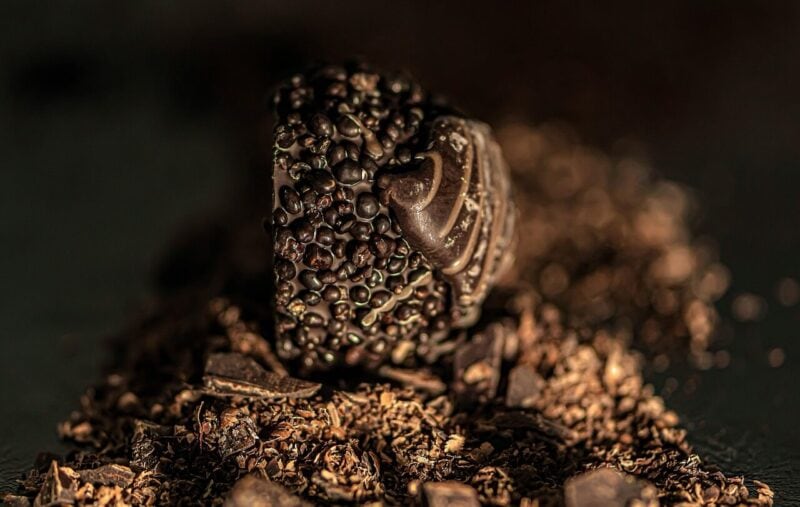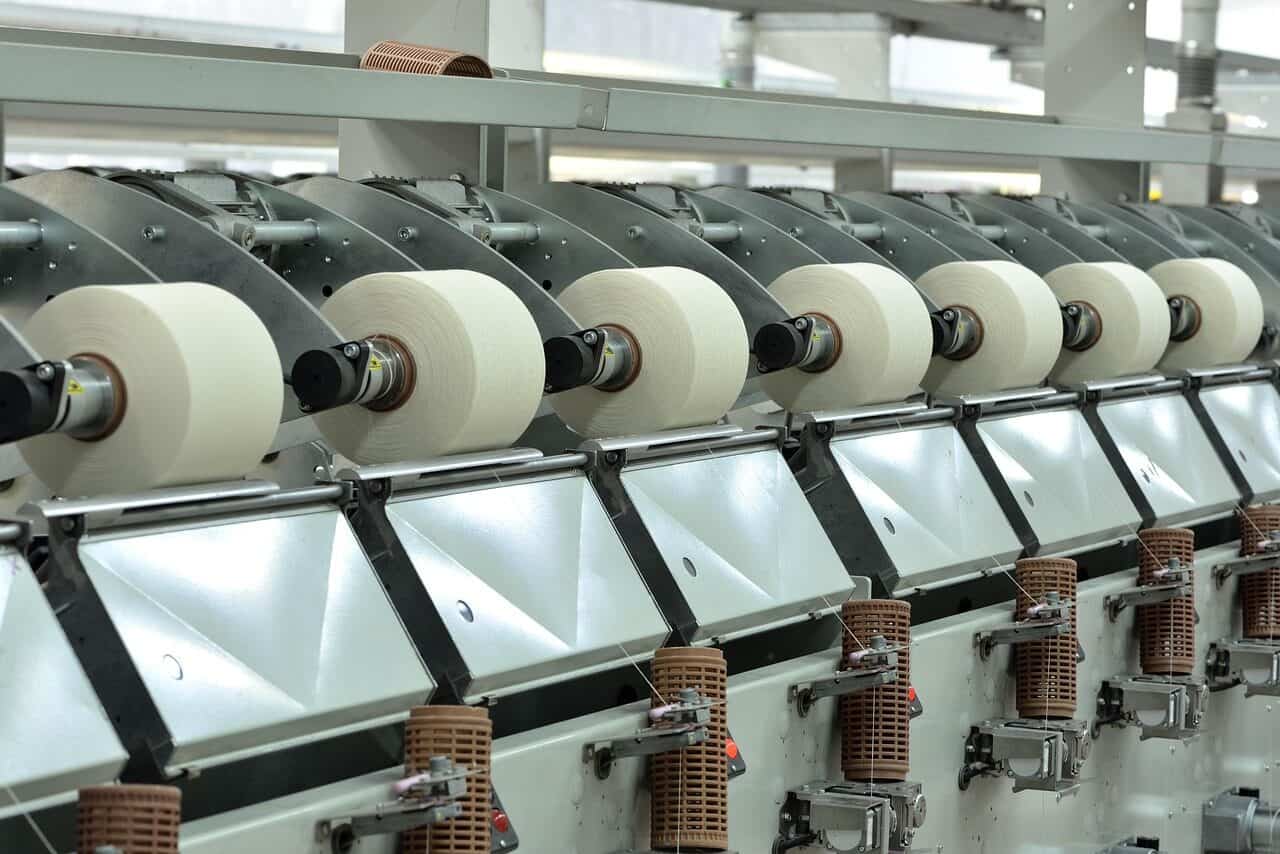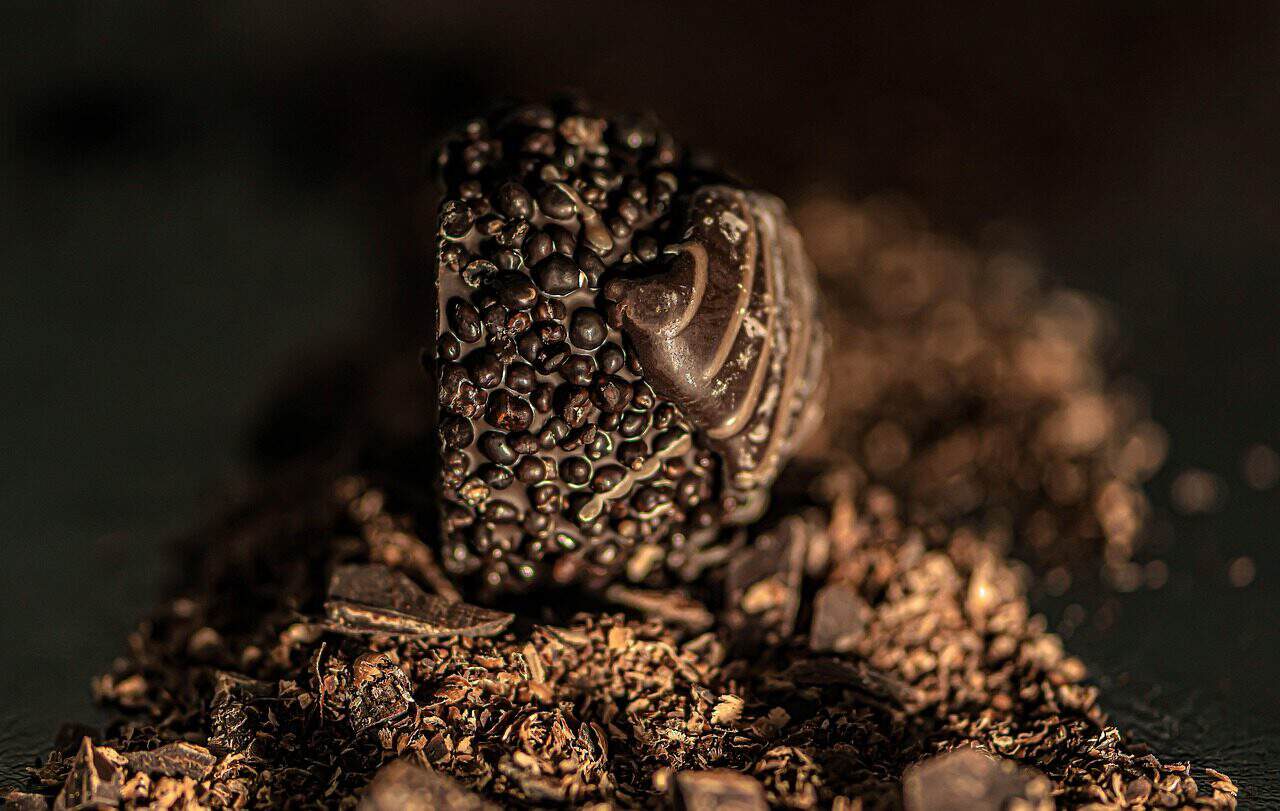Produção de equipamentos para embalagem de doces: Um Guia Profissional do Fabricante
Refletindo a qualidade de seus doces
A embalagem de seus doces mostra o delicioso produto que há dentro dela? Em um mercado movimentado, os clientes julgam seu produto primeiro com os olhos. O equipamento certo de embalagem de doces não é apenas uma grande compra; é um investimento importante em sua marca, na qualidade do produto e no bom funcionamento de sua empresa. Um invólucro fraco, um lacre ruim ou uma marca confusa podem fazer com que os clientes pensem instantaneamente em todo o cuidado e a qualidade que você coloca em seus doces. Por outro lado, uma embalagem nítida, segura e bem apresentada torna seu produto melhor, protege-o e ajuda a impulsionar as vendas.
O mercado global de doces é enorme, valendo mais de $200 bilhões, e a concorrência é acirrada em todas as prateleiras das lojas. Estudos mostram que mais de 70% das decisões de compra acontecem na loja, portanto, sua embalagem é o seu vendedor mais importante. Ela deve chamar a atenção, mostrar qualidade e manter os produtos frescos desde a fábrica até as mãos do cliente. Este guia, escrito do ponto de vista de um fabricante profissional, o orientará em todas as partes importantes da escolha do equipamento de embalagem de doces perfeito para o seu negócio. Tornaremos a tecnologia fácil de entender e lhe daremos um plano claro para fazer um investimento inteligente.
Neste guia, você aprenderá:
- Os motivos básicos pelos quais um equipamento de qualidade é absolutamente necessário.
- Uma análise detalhada dos principais tipos de máquinas de embalagem de doces.
- Um plano inteligente para escolher a máquina certa para seus doces específicos.
- Exemplos reais de como diferentes empresas usam esse equipamento.
- Novas tendências que moldarão o futuro das embalagens de doces.
Por que o equipamento não é negociável
Investir no equipamento certo de embalagem de doces é uma decisão básica que traz retornos para toda a sua empresa. Isso faz com que sua empresa passe de um processo manual e trabalhoso para uma operação suave, profissional e crescente. Os benefícios são reais e afetam diretamente seus lucros, a reputação da marca e o potencial de crescimento. Vamos explorar os principais motivos que tornam o maquinário de qualidade um ativo essencial.
Proteção do produto e prazo de validade
Seu A jornada do doce desde a produção A linha para a despensa é cheia de perigos. Umidade, oxigênio, danos físicos e contaminação são ameaças constantes. Os equipamentos profissionais de embalagem criam uma barreira importante contra esses elementos. Uma empacotadora de fluxo de alta qualidade, por exemplo, produz uma vedação firme que bloqueia a umidade e o ar, evitando que balas duras fiquem pegajosas e que os chocolates desenvolvam manchas brancas. Essa forte proteção amplia diretamente seu prazo de validade do produtoreduzindo o desperdício de produtos estragados e garantindo que os clientes experimentem seus doces exatamente como você pretende.
Apresentação da marca e marketing
Sua embalagem é seu vendedor silencioso. Embalagens inconsistentes, mal seladas ou amassadas demonstram falta de profissionalismo e podem afastar potenciais compradores. Equipamentos automatizados garantem que cada unidade seja perfeitamente embalada, selada e apresentada. A consistência no aperto do invólucro, na colocação do lacre e no alinhamento da marca cria uma aparência uniforme e de alta qualidade na prateleira. Esse acabamento profissional gera a confiança do consumidor e reforça o valor premium do produto em seu interior. Ele transforma sua embalagem de um simples recipiente em uma poderosa ferramenta de marketing.
Eficiência operacional e escalabilidade
O empacotamento manual cria gargalos. É lento, propenso a erros humanos e limita sua capacidade de produção. A automação desse processo com o equipamento certo de empacotamento de doces gera ganhos significativos de eficiência. Uma única máquina de empacotamento por torção pode empacotar centenas de doces por minuto, uma tarefa que exigiria uma grande equipe de trabalhadores manuais. Esse aumento significativo na produção não apenas reduz os custos de mão de obra, mas também permite que sua empresa cresça. Você pode aceitar com confiança pedidos maiores de varejistas, expandir para novos mercados e atender a picos de demanda sazonais sem comprometer a qualidade ou os prazos de entrega.
Conformidade e segurança alimentar
No setor de alimentos, a segurança é o mais importante. O equipamento de embalagem de doces de um fabricante de boa reputação é construído para atender a padrões rigorosos de qualidade alimentar. Isso envolve o uso de materiais como o aço inoxidável 304 para todas as peças de contato, projetados para facilitar a limpeza e evitar a contaminação cruzada, além de garantir a conformidade com os regulamentos de órgãos como a FDA e a CE. O uso de equipamentos certificados não se trata apenas de seguir regras; trata-se de proteger seus clientes e sua marca contra o risco desastroso de um recall de produto.
Os principais benefícios de investir em equipamentos de qualidade incluem:
- Redução dos custos de mão de obra por unidade.
- Aumento da velocidade de produção (rendimento).
- Melhoria da segurança e da higiene do produto.
- Aumento do prazo de validade e redução do desperdício de produtos.
- Melhoria da imagem e da consistência da marca.
- Capacidade de dimensionar a produção para atender à demanda.
Decodificação de máquinas de embalagem de doces
O mundo dos equipamentos de embalagem de doces pode parecer complexo, com muitas máquinas diferentes projetadas para tarefas específicas. Entender as principais categorias é o primeiro passo para encontrar o equipamento certo para embalar doces. solução para sua linha de produção. Cada tipo de máquina tem uma finalidade diferente, lida com materiais de embalagem diferentes e é adequada para tipos específicos de doces. Aqui está um detalhamento completo dos equipamentos de embalagem de doces mais comuns.
Envolvedores de fluxo (HFFS e VFFS)
As embaladoras de fluxo estão entre as máquinas mais flexíveis e amplamente utilizadas no setor de doces. Elas criam um saco no estilo "pillow pack" formando, enchendo e selando uma embalagem a partir de um rolo contínuo de filme. Elas são divididas em dois tipos principais.
As máquinas Horizontal Form-Fill-Seal (HFFS) são perfeitas para produtos sólidos de um único item. O produto é alimentado horizontalmente no filme, que é então formado em um tubo ao redor dele, selado longitudinalmente (a "vedação da aleta") e, em seguida, cortado e selado nas extremidades (as "vedações finais"). Essas são as máquinas ideais para embalar balas duras individuais, pequenas barras de chocolate, torrone e barras de granola.
As máquinas Vertical Form-Fill-Seal (VFFS) são usadas para produtos soltos e de fluxo livre. Como o nome sugere, o processo é orientado verticalmente. O filme é formado em um tubo, selado na parte inferior e, em seguida, preenchido por cima usando uma balança ou um dispensador. Depois de cheio, a parte superior é selada e o saco é cortado, ao mesmo tempo em que se cria a vedação inferior para o próximo saco. As linhas VFFS são perfeitas para ensacar ursinhos de goma, jujubas, nozes cobertas com chocolate e misturas de doces em pó.
Máquinas de empacotamento por torção
Para balas clássicas, como balas duras, caramelos e caramelos, a máquina de torcer é uma solução icônica e altamente eficiente. Essa máquina especializada pega um pedaço individual de doce e o envolve em um filme, torcendo firmemente as duas extremidades para fixar o produto. O resultado é a tradicional embalagem de "torção dupla", conhecida pelos amantes de doces em todo o mundo. Essas máquinas são valorizadas por sua alta velocidade, com alguns modelos capazes de embalar mais de 1.000 peças por minuto. Elas são essenciais para qualquer produtor de alto volume de doces cozidos ou balas mastigáveis.
Máquinas de enchimento e selagem de bolsas
À medida que as preferências dos consumidores mudam para embalagens premium e resseláveis, as máquinas de pouches pré-fabricados têm se tornado cada vez mais populares. Diferentemente das empacotadoras de fluxo que criam sacos a partir de um rolo de filme, essas máquinas trabalham com pouches pré-formados, como Doypacks stand-up ou sacos planos com três lados selados. A máquina seleciona automaticamente um pouch, abre-o, enche-o com o produto (geralmente por meio de uma balança de múltiplos cabeçotes para maior precisão) e, em seguida, fecha-o. Esse equipamento é ideal para embalar gomas premium, sortimentos de chocolate artesanal, misturas para trilha e outros produtos doces de alto valor em que a apresentação e a conveniência são fundamentais.
Máquinas de cartonagem e embalagem de caixas
A embalagem não termina com o invólucro primário. A embalagem secundária envolve o agrupamento de produtos em embalagens múltiplas, caixas de exposição ou caixas de remessa. As máquinas de cartonagem automatizam o processo de colocação de doces embrulhados, barras embrulhadas em fluxo ou pequenos sacos em caixas de papelão. Elas podem ser horizontais (carga final) ou verticais (carga superior), dependendo do produto e do estilo da caixa. No final da linha, as máquinas de empacotamento de caixas organizam automaticamente essas caixas ou bolsas em caixas de papelão ondulado maiores, selando-as para o transporte. Essas máquinas são fundamentais para preparar os produtos para a distribuição no varejo.
Linhas de enchimento de frascos e garrafas
Para produtos como granulados, balas de goma, jujubas e pequenos chocolates revestidos (por exemplo, estilo M&Ms), os recipientes rígidos são uma escolha popular. Uma linha de envase de jarras e garrafas é um sistema integrado que pode incluir um desempacotador de recipientes, um enchedor (geralmente uma balança linear ou rotativa), uma tampadora para aplicar tampas e uma etiquetadora. Essas linhas oferecem uma solução completa para embalar doces de fluxo livre em recipientes de plástico ou vidro, prontos para a prateleira do varejo.
| Tabela 1: Visão geral dos equipamentos de embalagem de doces |
| Tipo de equipamento |
| Envoltórios de fluxo (HFFS/VFFS) |
| Máquinas de empacotamento por torção |
| Máquinas de enchimento de bolsas |
| Máquinas de cartonagem |
| Enchedores de frascos/garrafas |
Escolhendo sua combinação perfeita
Com uma compreensão clara do maquinário disponível, a próxima etapa é conectar esse conhecimento às necessidades específicas de seu negócio. A seleção do equipamento certo é uma decisão complexa que vai muito além do tipo de doce que você produz. Ela exige uma análise completa de seu produto, metas de produção e orçamento. Esse plano de tomada de decisão o guiará em direção à combinação perfeita.
Analise as características de seu doce
As propriedades físicas de seu doce são o fator mais importante na seleção do equipamento. Uma máquina que funciona perfeitamente para doces duros pode destruir trufas delicadas.
Fragilidade: com que facilidade seu produto quebra ou muda de forma? Chocolates ocos ou criações delicadas de açúcar fiado requerem um manuseio extremamente cuidadoso, o que geralmente aponta para soluções robóticas semiautomáticas ou especializadas em pick-and-place. Por outro lado, balas duras e resistentes podem suportar as altas velocidades e pressões mecânicas de uma máquina de empacotamento por torção ou HFFS.
Pegajosidade: Gomas não revestidas, caramelos frescos e caramelos são notoriamente pegajosos. Ao escolher o equipamento para esses produtos, procure recursos projetados para lidar com esse problema, como peças de contato revestidas de Teflon, alimentadores vibratórios especializados e máquinas de cortar e embrulhar que manipulam o produto antes que ele esteja totalmente endurecido.
Consistência de forma e tamanho: Seus produtos são uniformes, como uma bala dura estampada, ou têm variações naturais, como os cachos de nozes cobertos com chocolate ou os quebradiços artesanais? Os produtos uniformes são facilmente manuseados pela maioria dos sistemas automatizados de alta velocidade. Produtos com formas e tamanhos inconsistentes podem exigir sistemas de alimentação mais avançados, como balanças de múltiplos cabeçotes para linhas VFFS, para garantir o porcionamento preciso e evitar congestionamentos.
Defina sua escala de produção
Seu volume de produção atual e futuro influencia diretamente o nível de automação e velocidade que você precisa. É fundamental escolher uma máquina que não apenas atenda às necessidades atuais, mas que também dê suporte aos seus planos de crescimento.
Início e produção de pequenos lotes: Se você é um produtor artesanal ou está apenas começando, uma máquina semiautomática é geralmente o melhor ponto de entrada. Essas máquinas exigem que um operador alimente manualmente o produto, mas ainda assim proporcionam uma selagem e um acabamento profissionais a um custo inicial mais baixo. Elas oferecem flexibilidade para pequenas tiragens e vários tipos de produtos.
Produção em grande escala na fábrica: Para empresas estabelecidas com contratos de varejo de alto volume, uma linha totalmente automática e de alta velocidade é essencial. Essas máquinas são sistemas integrados que podem funcionar continuamente com o mínimo de intervenção do operador, embalando centenas ou até milhares de unidades por minuto (PPM). O investimento é mais alto, mas o retorno sobre o investimento por meio da economia de mão de obra e do rendimento é significativo.
Considere seu material de embalagem
A máquina que você escolher deve ser compatível com o filme de embalagem desejado. Materiais diferentes têm propriedades diferentes e exigem recursos específicos da máquina. Por exemplo, os filmes de selagem a quente, como o BOPP (polipropileno biaxialmente orientado), são comuns e funcionam com a maioria das embaladoras de fluxo padrão. No entanto, se o seu produto for sensível ao calor, como o chocolate, talvez você precise de uma máquina capaz de lidar com filmes de selagem a frio que aderem usando pressão em vez de calor. Com a crescente demanda por sustentabilidade, você também deve considerar se uma máquina pode lidar com materiais mais novos e ecológicos, como filmes à base de papel ou PLA compostável, que podem exigir mandíbulas de selagem especializadas ou controles de temperatura.
Orçamento e custo total de propriedade
O preço de compra inicial é apenas uma parte da equação. Um comprador inteligente considera o custo total de propriedade (TCO), que inclui:
- Investimento inicial: O preço da própria máquina.
- Instalação e treinamento: Custos associados à instalação e ao treinamento do operador.
- Manutenção e peças de reposição: O custo contínuo de consumíveis e peças de reposição. Um fabricante de boa reputação oferecerá peças e suporte prontamente disponíveis.
- Consumo de energia: Os requisitos de energia e ar comprimido da máquina.
- Tempo de troca: Para empresas com vários produtos, uma máquina com recursos de troca rápida e sem ferramentas pode economizar muito tempo e mão de obra, reduzindo o tempo de inatividade entre as execuções.
| Tabela 2: Guia de correspondência entre doces e equipamentos |
| Se você produz... |
| Balas duras (embaladas individualmente) |
| Gummy Bears, Jelly Beans (em sacos) |
| Barras de chocolate artesanal |
| Caramelos e caramelos |
| Trufas de chocolate premium (em uma caixa) |
Aplicações do setor no mundo real
A teoria e as especificações são importantes, mas ver como o equipamento resolve problemas do mundo real fornece a imagem mais clara de seu valor. Vamos explorar alguns perfis de empresas de doces realistas para ver como elas usaram o equipamento certo de embalagem de doces para superar desafios e atingir suas metas. Já vimos clientes nessas situações exatas transformarem suas operações com um investimento estratégico.
O Chocolatier Artesanal
Perfil: A "Cocoa Crafters" é uma produtora de pequenos lotes de barras de chocolate de alta qualidade e de origem única. Seu produto é premium, e sua marca reflete isso.
Desafio: a equipe estava embrulhando manualmente cada barra em papel alumínio e uma capa de papel. O processo era incrivelmente lento, criando um grande gargalo de produção que limitava sua capacidade de fornecer mais do que algumas lojas gourmet locais. A embalagem manual também era inconsistente, o que prejudicava a sensação de qualidade superior da marca.
Solução: A Cocoa Crafters investiu em uma empacotadora de fluxo horizontal (HFFS) semiautomática. Essa máquina permitia que um operador colocasse cada barra na esteira de alimentação, e a máquina cuidava do resto, criando sempre uma embalagem perfeitamente selada e com aparência profissional. Eles escolheram um modelo com configurações ajustáveis para acomodar diferentes tamanhos de barras e uma função "sem produto, sem saco" para reduzir o desperdício de filme. O resultado foi um aumento de 5x na velocidade de empacotamento, uma apresentação consistente e de alta qualidade e a capacidade de finalmente expandir para a distribuição regional.
O fabricante de gomas de alto volume
Perfil: A "Gummy Galaxy" é uma fábrica em grande escala produzindo várias toneladas de balas de goma diariamente para as principais redes de supermercados.
Desafio: Atender a pedidos maciços do varejo exigia imensa velocidade e, principalmente, precisão. Sua antiga linha de embalagem estava dando uma média de 3 a 4 gomas extras por saco devido a um sistema de enchimento impreciso. Em milhões de sacos, essa "oferta de produto" representava uma enorme perda financeira. Eles precisavam de uma solução que fosse rápida e precisa.
Solução: A Gummy Galaxy implementou uma linha de embalagem totalmente automatizada e de alta velocidade. A peça central foi uma máquina Vertical Form-Fill-Seal (VFFS) integrada a uma balança de múltiplos cabeçotes com 14 cabeçotes. A balança de múltiplos cabeçotes usa um sofisticado algoritmo de pesagem combinada para calcular a combinação perfeita de seus 14 baldes de pesagem para atingir o peso desejado com incrível precisão (geralmente dentro de um único grama). Esse sistema pode encher e selar mais de 120 sacos por minuto, praticamente eliminando a perda de produtos. O investimento se pagou em menos de um ano com a redução do desperdício de produtos e o aumento da produtividade.
Tendências futuras da tecnologia de embalagem
O setor de doces não é estático. As demandas dos consumidores, as regulamentações ambientais e os avanços tecnológicos estão constantemente ampliando os limites do que é possível fazer em termos de embalagens. Ao investir em equipamentos, é aconselhável olhar para o futuro e escolher uma solução que não seja apenas eficaz hoje, mas também adaptável para o futuro. Aqui estão as principais tendências que estão moldando o futuro dos equipamentos de embalagem de doces.
Sustentabilidade e materiais ecologicamente corretos
A tendência mais significativa é a mudança para a sustentabilidade. Os consumidores e os órgãos reguladores estão exigindo uma redução nos plásticos de uso único. Isso levou ao desenvolvimento de novos materiais de embalagem, incluindo filmes monomateriais recicláveis, filmes à base de papel e bioplásticos compostáveis (como o PLA). Esses materiais se comportam de maneira diferente dos plásticos tradicionais. Eles podem exigir diferentes temperaturas de selagem, pressões ou tempos de permanência. Portanto, os equipamentos modernos de embalagem de doces devem ser versáteis. Procure máquinas com controles precisos de temperatura e a capacidade de serem atualizadas com mandíbulas de selagem especializadas para lidar com essa nova geração de filmes ecológicos.
Fábricas inteligentes e Indústria 4.0
O conceito de "fábrica inteligente" está se tornando uma realidade. As máquinas de embalagem modernas não são mais equipamentos isolados; elas são dispositivos inteligentes e conectados. A integração do setor 4.0 significa que os equipamentos são equipados com sensores e conectados à Internet (a Internet das Coisas, ou IoT). Isso permite:
- Monitoramento remoto: Os gerentes podem visualizar dados de produção em tempo real (como Overall Equipment Effectiveness ou OEE) de um telefone ou computador.
- Manutenção preditiva: Os sensores podem detectar possíveis falhas antes que elas ocorram, permitindo a manutenção programada que evita o dispendioso tempo de inatividade não planejado.
- Análise de dados: A máquina coleta dados em cada ciclo, que podem ser analisados para otimizar o desempenho, reduzir o desperdício e melhorar a eficiência.
Aumento da automação e da robótica
Embora a automação dentro da máquina de embalagem seja padrão, o foco agora está na automação das tarefas ao redor dela. A integração robótica está se tornando mais comum e acessível. Os braços robóticos podem ser usados para aplicações de "pegar e colocar", carregando suavemente doces delicados ou de formato estranho em um transportador de alimentação. No final da linha, os robôs são cada vez mais usados para cartonagem e paletização - as tarefas repetitivas de colocar caixas em caixas de transporte e empilhar essas caixas em um palete. Isso reduz o trabalho manual, minimiza o risco de lesões por esforço repetitivo e melhora a higiene ao reduzir o contato humano com o produto embalado.
Personalização e embalagem sob demanda
O mercado está se movendo em direção a uma maior variedade e personalização de produtos. Isso significa ciclos de produção mais curtos e trocas mais frequentes. Os fabricantes de equipamentos estão respondendo com o projeto de máquinas mais flexíveis e mais rápidas de trocar. Recursos como remoção sem ferramentas de peças de troca, armazenamento de receitas na HMI (Interface Homem-Máquina) e ajustes automáticos podem reduzir o tempo de troca de horas para minutos. Essa agilidade permite que os produtores executem com eficiência lotes menores para promoções sazonais, clientes de marca própria ou pedidos personalizados.
| Tabela 3: Tendências futuras em embalagens de doces |
| Tendência |
| Sustentabilidade |
| Indústria 4.0 / IoT |
| Robótica e automação |
| Flexibilidade e personalização |
Seu parceiro em excelência
Escolher o equipamento certo para embalar doces é uma decisão marcante para sua empresa. Não se trata apenas de uma compra, mas de um investimento estratégico que influencia diretamente a integridade de seu produto, a percepção de sua marca e sua capacidade operacional de crescimento. A jornada desde a seleção de uma máquina até a produção em escala total exige uma análise cuidadosa, mas é um caminho que leva a uma maior eficiência, profissionalismo e lucratividade.
Seguindo a estrutura apresentada neste guia, você poderá navegar com confiança pelo processo. Lembre-se das principais etapas para fazer uma escolha bem-sucedida:
- Analise seu produto: Entenda profundamente as propriedades exclusivas de fragilidade, pegajosidade e consistência de seu doce.
- Defina sua escala: Adeque a velocidade e o nível de automação da máquina ao seu volume de produção atual e futuro.
- Avalie a tecnologia: Conheça os diferentes tipos de máquinas - de empacotadoras de fluxo a cartonadoras - e suas principais funções.
- Olhe para o futuro: Leve em conta as tendências emergentes, como sustentabilidade e integração de fábricas inteligentes, para garantir um investimento viável e de longo prazo.
Munido desse conhecimento, você agora está preparado para avaliar o mercado e selecionar uma solução que garanta que seus doces sejam apresentados com a qualidade e o cuidado que merecem. Sua jornada rumo à excelência em embalagens começa hoje, e o parceiro de equipamentos certo estará lá para apoiá-lo em cada etapa do caminho.
Perguntas frequentes
Q1: Qual é a vida útil média de uma máquina de embalagem de doces?
A vida útil de uma máquina de embalagem de doces depende muito da qualidade de sua construção, da intensidade de seu uso e, o mais importante, da consistência de sua manutenção. Uma máquina bem conservada de um fabricante de boa reputação, construída com componentes de alta qualidade, como estruturas de aço inoxidável e componentes eletrônicos confiáveis, pode durar de 15 a 20 anos ou até mais. Máquinas de custo mais baixo podem ter uma vida operacional mais curta.
Q2: Qual é o nível de manutenção necessário para esse equipamento?
A manutenção de rotina é fundamental para a longevidade e o desempenho. Uma programação típica inclui a limpeza diária das peças em contato com o produto para garantir a segurança dos alimentos. As verificações semanais podem envolver a inspeção das correias, a lubrificação das peças móveis e a verificação dos alinhamentos dos sensores. A manutenção anual mais intensiva, geralmente realizada por um técnico do fabricante, envolve uma inspeção mais profunda e a substituição de peças de desgaste, como lâminas e aquecedores. Seguir o cronograma de manutenção recomendado pelo fabricante é a melhor maneira de evitar paradas inesperadas.
P3: Uma máquina pode processar diferentes tipos de doces?
A versatilidade varia de acordo com o tipo de máquina. Algumas máquinas são altamente flexíveis. Por exemplo, uma empacotadora de fluxo horizontal pode ser ajustada ou equipada com peças de troca para lidar com diferentes comprimentos, larguras e alturas de produtos dentro de uma determinada faixa. Entretanto, a função principal de uma máquina geralmente é específica. Uma empacotadora de fluxo projetada para barras sólidas não pode ser usada para ensacar gomas soltas; isso requer uma máquina VFFS. Ao discutir suas necessidades com um fabricante, seja claro sobre todos os produtos que deseja processar para determinar se uma máquina flexível ou várias máquinas dedicadas são a melhor solução.
P4: Qual é a diferença entre equipamentos semiautomáticos e totalmente automáticos?
A principal diferença é o nível de envolvimento do operador. Uma máquina semiautomática requer um operador para uma parte importante do processo, normalmente o carregamento do produto na máquina, um a um. Por exemplo, colocar uma barra de chocolate na entrada de uma empacotadora de fluxo. Uma máquina totalmente automática é integrada a uma linha de produção maior e requer mínima intervenção humana. Ela recebe os produtos automaticamente de um processo anterior (como um túnel de resfriamento) e descarrega as embalagens prontas em um transportador posterior para o empacotamento das caixas, funcionando continuamente.








